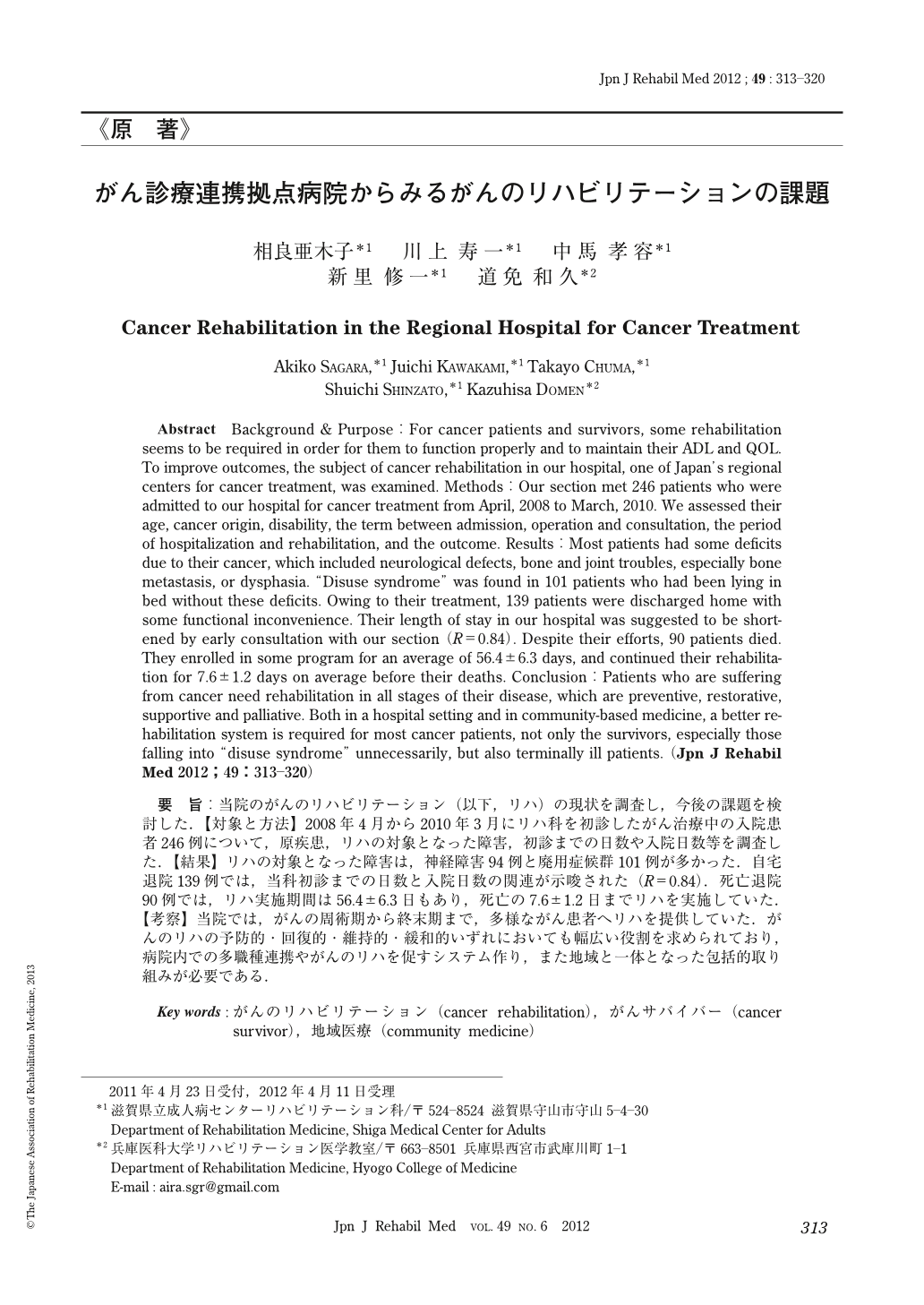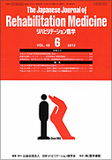Japanese
English
- 販売していません
- Abstract 文献概要
- 1ページ目 Look Inside
- 参考文献 Reference
要旨:当院のがんのリハビリテーション(以下,リハ)の現状を調査し,今後の課題を検討した.【対象と方法】2008年4月から2010年3月にリハ科を初診したがん治療中の入院患者246例について,原疾患,リハの対象となった障害,初診までの日数や入院日数等を調査した.【結果】リハの対象となった障害は,神経障害94例と廃用症候群101例が多かった.自宅退院139例では,当科初診までの日数と入院日数の関連が示唆された(R=0.84).死亡退院90例では,リハ実施期間は56.4±6.3日もあり,死亡の7.6±1.2日までリハを実施していた.【考察】当院では,がんの周術期から終末期まで,多様ながん患者へリハを提供していた.がんのリハの予防的・回復的・維持的・緩和的いずれにおいても幅広い役割を求められており,病院内での多職種連携やがんのリハを促すシステム作り,また地域と一体となった包括的取り組みが必要である.
Abstract Background & Purpose : For cancer patients and survivors, some rehabilitation seems to be required in order for them to function properly and to maintain their ADL and QOL. To improve outcomes, the subject of cancer rehabilitation in our hospital, one of Japan's regional centers for cancer treatment, was examined. Methods : Our section met 246 patients who were admitted to our hospital for cancer treatment from April, 2008 to March, 2010. We assessed their age, cancer origin, disability, the term between admission, operation and consultation, the period of hospitalization and rehabilitation, and the outcome. Results : Most patients had some deficits due to their cancer, which included neurological defects, bone and joint troubles, especially bone metastasis, or dysphasia. “Disuse syndrome” was found in 101 patients who had been lying in bed without these deficits. Owing to their treatment, 139 patients were discharged home with some functional inconvenience. Their length of stay in our hospital was suggested to be shortened by early consultation with our section (R=0.84). Despite their efforts, 90 patients died. They enrolled in some program for an average of 56.4±6.3 days, and continued their rehabilitation for 7.6±1.2 days on average before their deaths. Conclusion : Patients who are suffering from cancer need rehabilitation in all stages of their disease, which are preventive, restorative, supportive and palliative. Both in a hospital setting and in community-based medicine, a better rehabilitation system is required for most cancer patients, not only the survivors, especially those falling into “disuse syndrome” unnecessarily, but also terminally ill patients.

Copyright © 2012, The Japanese Association of Rehabilitation Medicine. All rights reserved.


